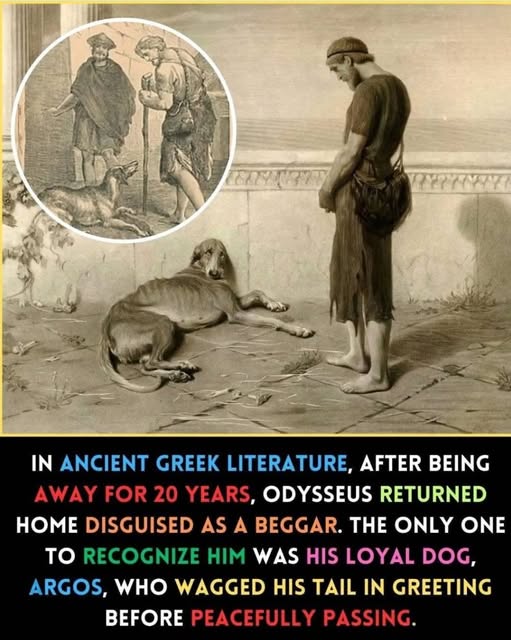In Homer’s Odyssey, one of the most poignant moments occurs in Book 17, when Odysseus returns to Ithaca after twenty years—ten spent at war and another ten lost at sea. Disguised as a beggar to assess the situation in his palace, he encounters his faithful dog, Argos.

🐾 A Final Recognition
Argos, once a vigorous hunting dog trained by Odysseus, now lies neglected on a pile of dung, infested with fleas and nearing death. However, upon sensing his master’s presence, Argos lifts his head, wags his tail, and drops his ears—a silent acknowledgment of the long-awaited reunion. Too weak to approach, he dies shortly after, content to have seen Odysseus once more.
💔 A Moment of Silent Grief
Odysseus, moved by the sight of his loyal companion, turns away to hide a tear, concealing his emotion from Eumaeus, the swineherd. This brief exchange highlights the deep bond between master and dog, transcending time and hardship.
🐕 Symbolism and Legacy
The death of Argos serves as a powerful symbol of loyalty and the passage of time. Scholars interpret this scene as a metaphor for the decline of Odysseus’s household in his absence, emphasizing themes of fidelity and the enduring connection between humans and animals.
Leave a Reply